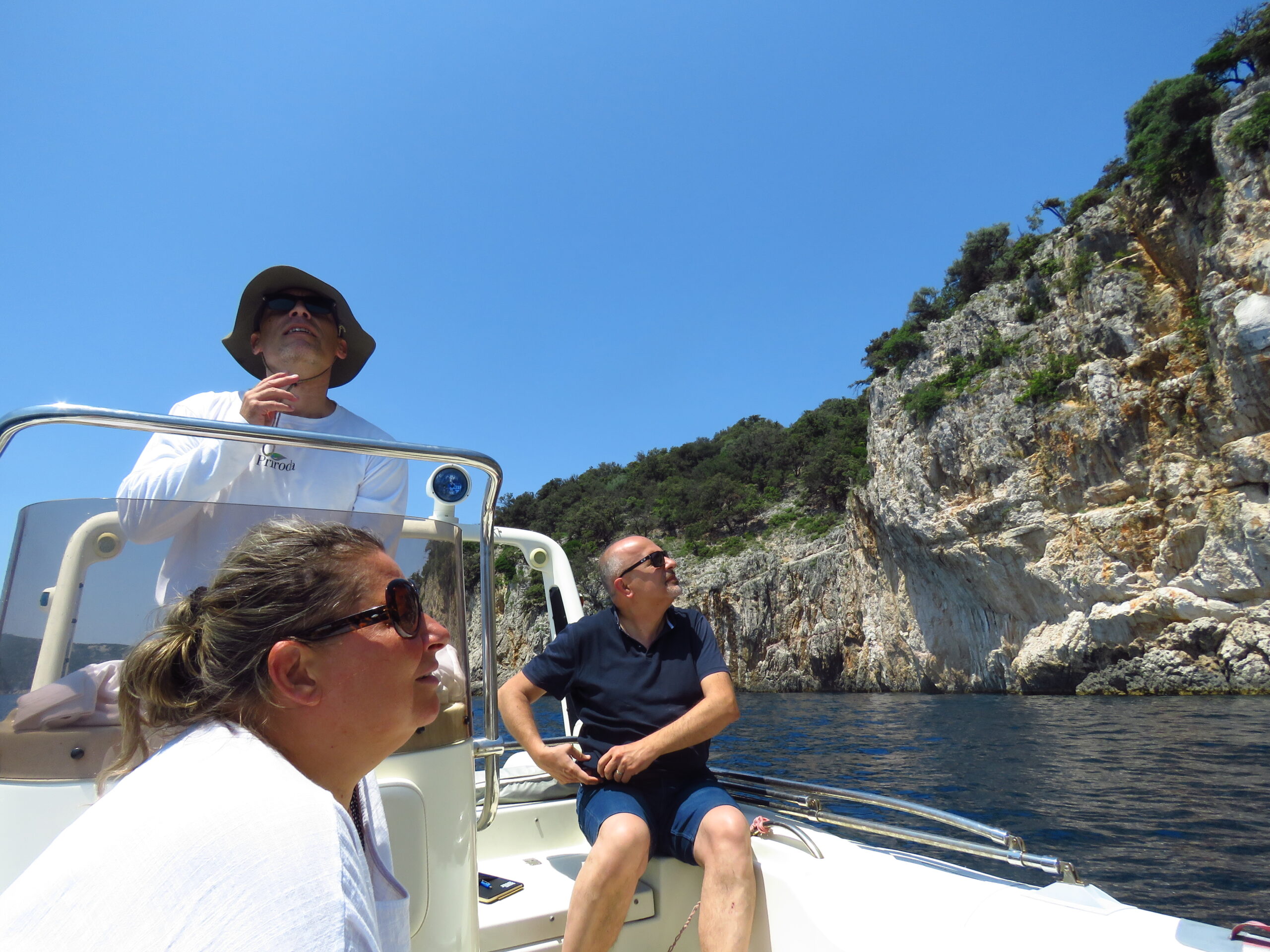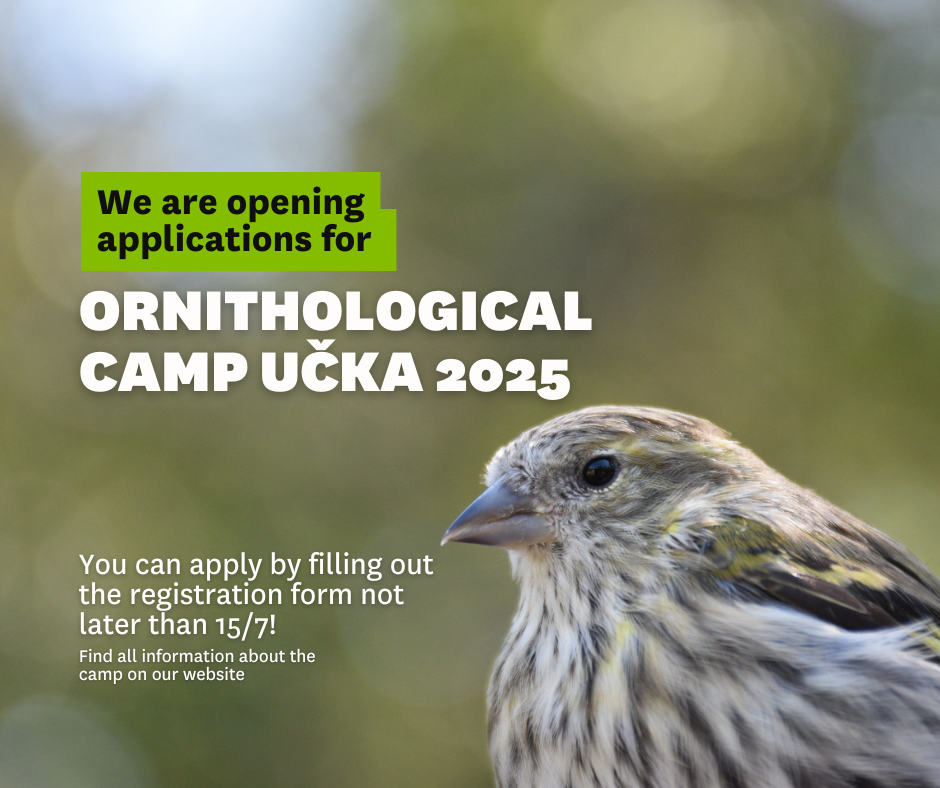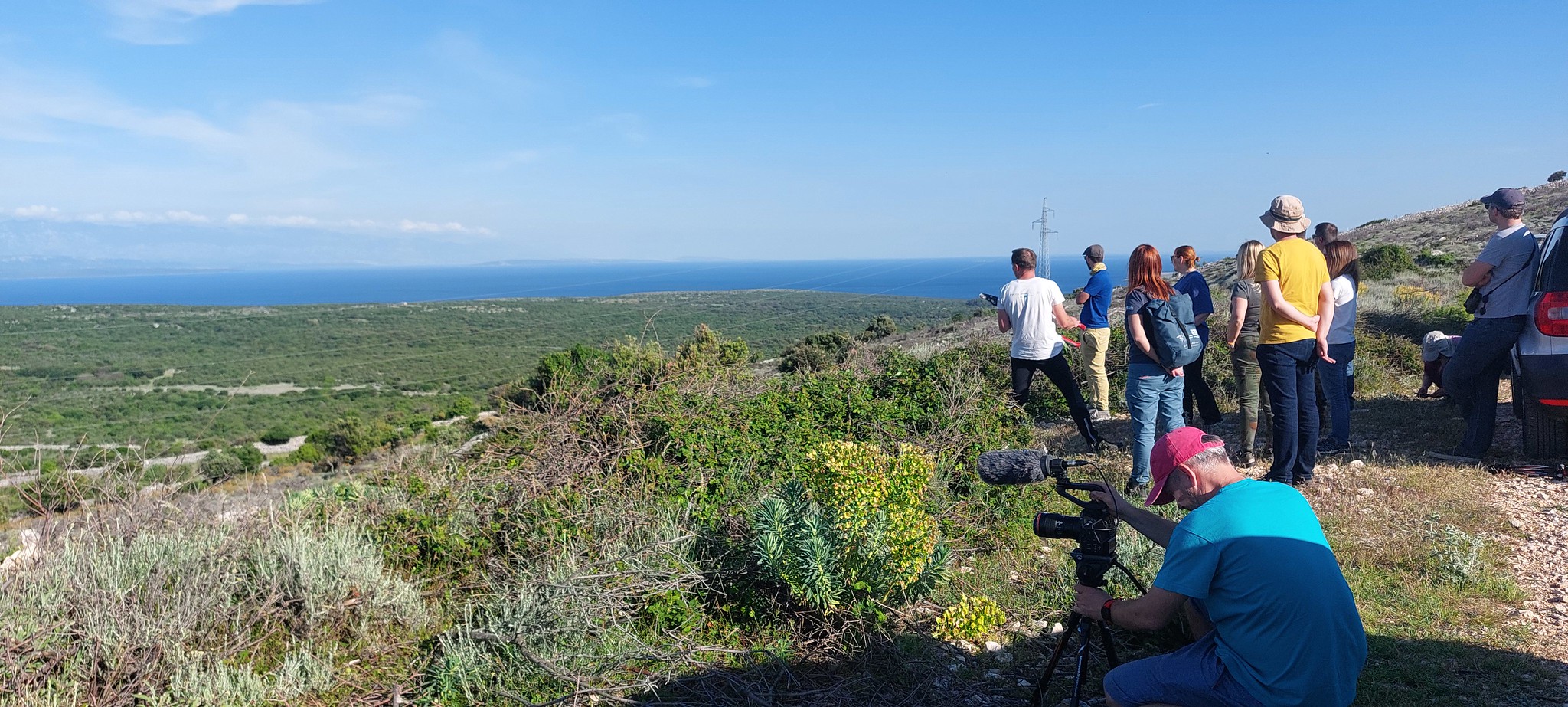IBA areas are soon expected to become bird conservation areas of the NATURA 2000 ecological network, which currently covers only 9.6% of the Croatian sea, in contrast to 36% of the land

The Action Plan for Offshore renewable energy sources, which was recently created by the Faculty of Mechanical Engineering and Naval Architecture (FSB) of the University of Zagreb, OIKON d.o.o. – the Institute for Applied Ecology and the Island Movement, was the topic of the radio show Dnevni ritam on the 1st program of Croatian Radio on Friday, May 12. Alongside the representative of the association Renewable Energy Sources of Croatia, Maja Pokrovac, and Zoran Poljanec from Oikon d.o.o. – Institute of Applied Ecology, a representative of the Biom Association was also invited.
Although BIOM did not participate in the development of the above-mentioned Action Plan and we only learned about its existence through the invitation to the show, we accepted the opportunity to talk about this topic because we wanted to highlight the importance of preserving seabirds when planning the construction of energy infrastructure in marine areas.
Dubravko Dender, head of Bird Conservation Program in Association Biom, speaking within the context of Biom’s research work on seabirds, pointed out that it is necessary to continue with research that will lead to the recognition and declaration of protected areas essential for seabird feeding and movement.
In Croatia the significant work on studying the movement of pelagic seabirds in the Lastovo Archipelago began as part of the LIFE Artina project. They only spend part of their lives on land, and they feed and migrate in sea areas. In order to truly preserve them, it was necessary to identify, in addition to the areas important for the nesting of these birds, those important for their feeding as well, as they are equally significant. The research process needs to be continued, both for Yelkouan Shearwater, Scopoli’s Shearwater and the Audouin’s Gulls, as well as for other marine species such as European shag and terns.
Seabirds are today considered the most endangered group of birds – over 30% of their species are threatened on a global scale according to the criteria of the IUCN (
International Union for Protection of Nature), and almost half of their populations are in decline. There are many reasons for this, such as the reduction in the quality of nesting habitat, the impact of invasive mammals species that eat birds eggs and chicks, the climate change, the reduction of food availability and bycatch.
Thanks to many years of demanding research on the movement of birds at sea, as part of the LIFE Artina project we have identified areas important for birds (
Important Bird Area – IBA) and we are now expecting that those areas will soon become bird conservation areas of the NATURA 2000 ecological network, which currently includes only 9.6% of the Croatian sea, in contrast to 36% of the land.
 The Action Plan for Offshore renewable energy sources, which was recently created by the Faculty of Mechanical Engineering and Naval Architecture (FSB) of the University of Zagreb, OIKON d.o.o. – the Institute for Applied Ecology and the Island Movement, was the topic of the radio show Dnevni ritam on the 1st program of Croatian Radio on Friday, May 12. Alongside the representative of the association Renewable Energy Sources of Croatia, Maja Pokrovac, and Zoran Poljanec from Oikon d.o.o. – Institute of Applied Ecology, a representative of the Biom Association was also invited.
Although BIOM did not participate in the development of the above-mentioned Action Plan and we only learned about its existence through the invitation to the show, we accepted the opportunity to talk about this topic because we wanted to highlight the importance of preserving seabirds when planning the construction of energy infrastructure in marine areas.
Dubravko Dender, head of Bird Conservation Program in Association Biom, speaking within the context of Biom’s research work on seabirds, pointed out that it is necessary to continue with research that will lead to the recognition and declaration of protected areas essential for seabird feeding and movement.
In Croatia the significant work on studying the movement of pelagic seabirds in the Lastovo Archipelago began as part of the LIFE Artina project. They only spend part of their lives on land, and they feed and migrate in sea areas. In order to truly preserve them, it was necessary to identify, in addition to the areas important for the nesting of these birds, those important for their feeding as well, as they are equally significant. The research process needs to be continued, both for Yelkouan Shearwater, Scopoli’s Shearwater and the Audouin’s Gulls, as well as for other marine species such as European shag and terns.
Seabirds are today considered the most endangered group of birds – over 30% of their species are threatened on a global scale according to the criteria of the IUCN (International Union for Protection of Nature), and almost half of their populations are in decline. There are many reasons for this, such as the reduction in the quality of nesting habitat, the impact of invasive mammals species that eat birds eggs and chicks, the climate change, the reduction of food availability and bycatch.
Thanks to many years of demanding research on the movement of birds at sea, as part of the LIFE Artina project we have identified areas important for birds (Important Bird Area – IBA) and we are now expecting that those areas will soon become bird conservation areas of the NATURA 2000 ecological network, which currently includes only 9.6% of the Croatian sea, in contrast to 36% of the land.
The Action Plan for Offshore renewable energy sources, which was recently created by the Faculty of Mechanical Engineering and Naval Architecture (FSB) of the University of Zagreb, OIKON d.o.o. – the Institute for Applied Ecology and the Island Movement, was the topic of the radio show Dnevni ritam on the 1st program of Croatian Radio on Friday, May 12. Alongside the representative of the association Renewable Energy Sources of Croatia, Maja Pokrovac, and Zoran Poljanec from Oikon d.o.o. – Institute of Applied Ecology, a representative of the Biom Association was also invited.
Although BIOM did not participate in the development of the above-mentioned Action Plan and we only learned about its existence through the invitation to the show, we accepted the opportunity to talk about this topic because we wanted to highlight the importance of preserving seabirds when planning the construction of energy infrastructure in marine areas.
Dubravko Dender, head of Bird Conservation Program in Association Biom, speaking within the context of Biom’s research work on seabirds, pointed out that it is necessary to continue with research that will lead to the recognition and declaration of protected areas essential for seabird feeding and movement.
In Croatia the significant work on studying the movement of pelagic seabirds in the Lastovo Archipelago began as part of the LIFE Artina project. They only spend part of their lives on land, and they feed and migrate in sea areas. In order to truly preserve them, it was necessary to identify, in addition to the areas important for the nesting of these birds, those important for their feeding as well, as they are equally significant. The research process needs to be continued, both for Yelkouan Shearwater, Scopoli’s Shearwater and the Audouin’s Gulls, as well as for other marine species such as European shag and terns.
Seabirds are today considered the most endangered group of birds – over 30% of their species are threatened on a global scale according to the criteria of the IUCN (International Union for Protection of Nature), and almost half of their populations are in decline. There are many reasons for this, such as the reduction in the quality of nesting habitat, the impact of invasive mammals species that eat birds eggs and chicks, the climate change, the reduction of food availability and bycatch.
Thanks to many years of demanding research on the movement of birds at sea, as part of the LIFE Artina project we have identified areas important for birds (Important Bird Area – IBA) and we are now expecting that those areas will soon become bird conservation areas of the NATURA 2000 ecological network, which currently includes only 9.6% of the Croatian sea, in contrast to 36% of the land.





